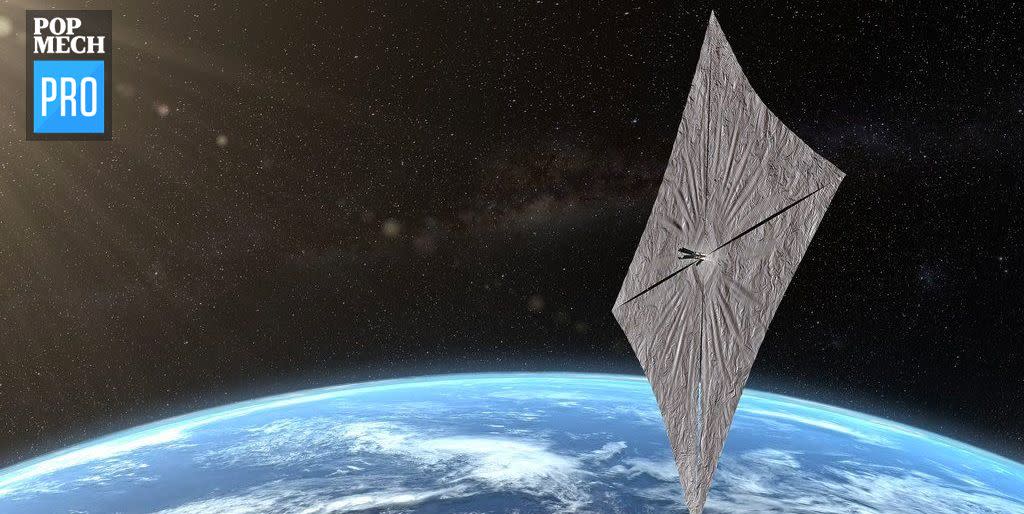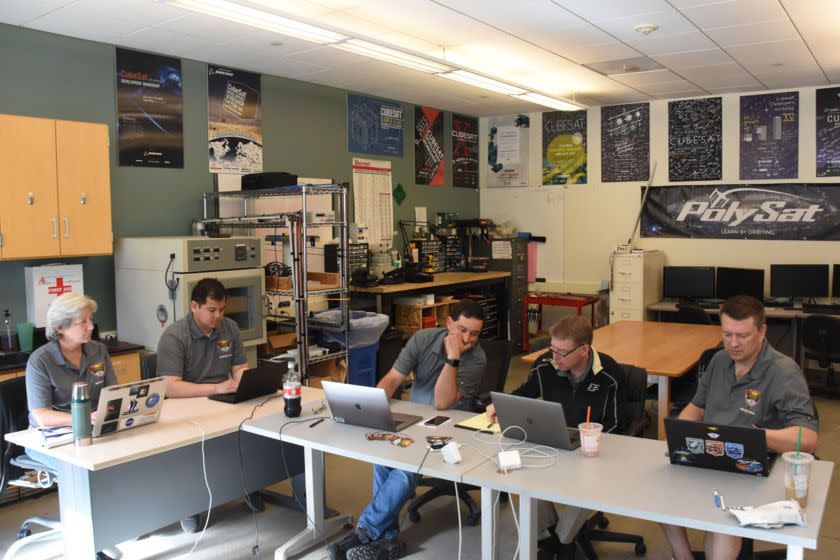LightSail 2 Is Now Flying Through Space, Powered by the Sun

The LightSail 2, a small spacecraft powered solely by the sun's rays, has successfully unfurled and is now flying through low Earth orbit (LEO). Built by The Planetary Society, a non-profit co-founded by Carl Sagan, the LightSail 2 is the first steerable solar sail launched into the LEO.
SAIL DEPLOYMENT COMPLETE! We're sailing on SUNLIGHT!!!!! pic.twitter.com/PA74NMa7Ry
— Planetary Society (@exploreplanets) July 23, 2019
The Society is keeping track of LightSail 2 on its website. The spacecraft is a CubeSat, a tiny satellite that has democratized low-level space exploration to the point where it can be can successfully crowdfunded, as was the case here. Launched into space on a SpaceX rocket on June 25, the spacecraft is flying in a circular orbit of around 447 miles (720 kilometers) around the Earth.
Weighing only 11 pounds, the LightSail 2's power comes from its mylar sail, which expands into an area of 344 square feet. Capturing the slow-but-steady photons released from the Sun, the LightSail 2 is taking advantage of the zero-gravity environment and very limited friction found in the void of space.

It's an old dream. "It really goes back to the 1600s," said Planetary Society CEO Bill Nye in a press conference. "Johannes Kepler, the guy after whom Kepler's laws of planetary motion are named, was watching Comet Halley before it had that name. He just reasoned that whatever was causing the tails to form must be something coming from the sun."
"He speculated that brave people would one day sail the void," Nye added. "It's really a romantic notion that Sagan promoted during his class. It was really something."
LightSail 2 isn't being entirely powered by the Sun's photons. It has a few solar panels as well, converting the star's energy into electricity to run its detectors, gyros, magnetometers, and magnetotorquers that "use the earth's magnetic field to make small adjustments to the spacecraft orientation," said Bruce Betts, The Planetary Society's chief scientist and LightSail program manager, in a press conference. Crucially, that electricity will also power LightSail 2's communications with Earth.
But electricity aside, the LightSail 2 is far from symbolic. Solar sailing isn't just the cleanest form of space travel ever designed—it could also be crucial to future interstellar flight.
The "only way to do it that anybody can think of right now is with solar sail," said Nye in the press conference. "You push it with laser light, maybe from earth based lasers or people have proposed putting lasers on the moon to push the solar sail."
While The Planetary Society doesn't have plans for a follow-up mission after LightSail 2, several other organizations are looking to follow in its footsteps. There's Breakthrough Initiatives, which wants to use solar sails for an interstellar journey to Alpha Centauri.
There's also NASA, which is considering a similar approach with its Near-Earth Asteroid (NEA) Scout. A CubeSat developed jointly by NASA’s Marshall Space Flight Center and the Jet Propulsion Laboratory, the Scout is a "robotic reconnaissance mission" that will research asteroids and determine if they're worth future human attention, as well if they pose any future hazards to human missions. The Scout's "hallmark solar sail will leverage the CubeSat’s continual solar exposure for efficient transit to the target asteroid during an approximate two-year cruise," NASA says.
It's unlikely that solar sailing will become a dominant means of space travel. But it could become a regular part of the mix, alongside plasma thrusters and other cleaner power sources. With more and more companies and governments planning on voyages through the stars, one of the oldest ideas in space travel may have a new life.
Source: Planetary Society
You Might Also Like

